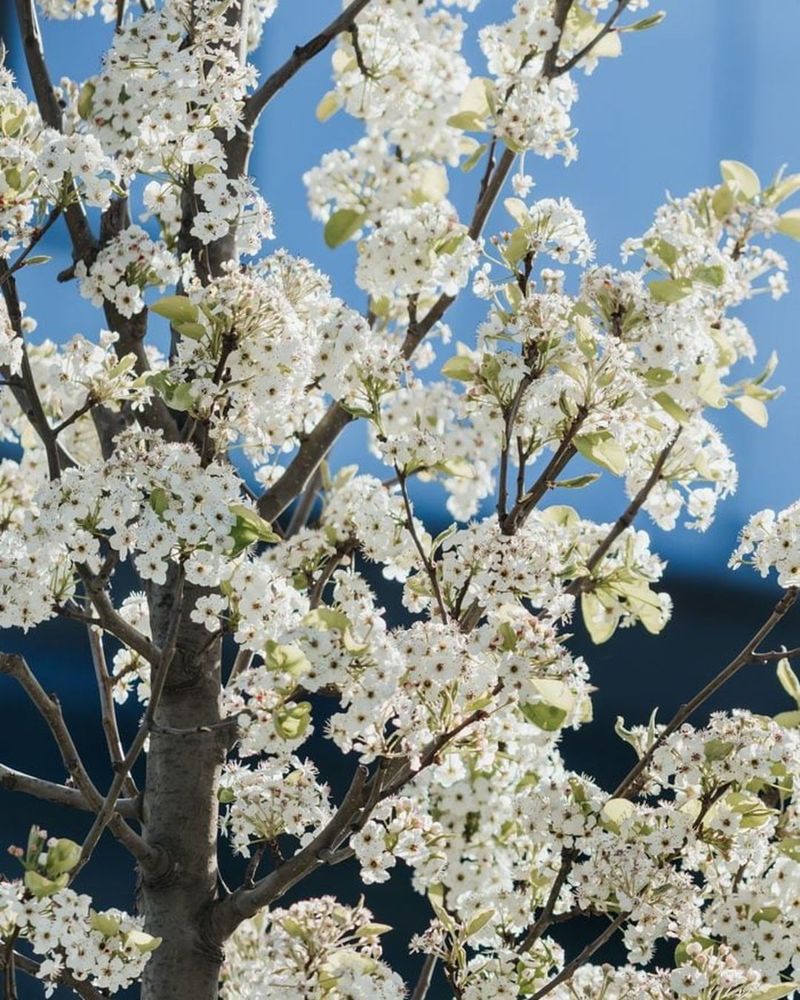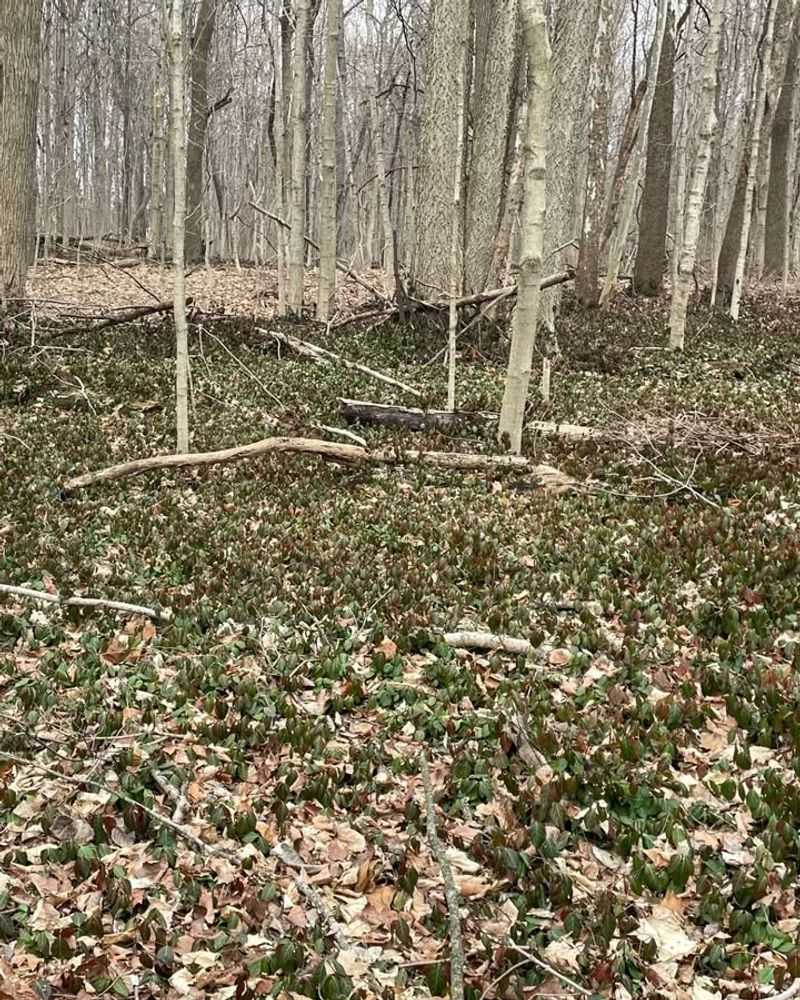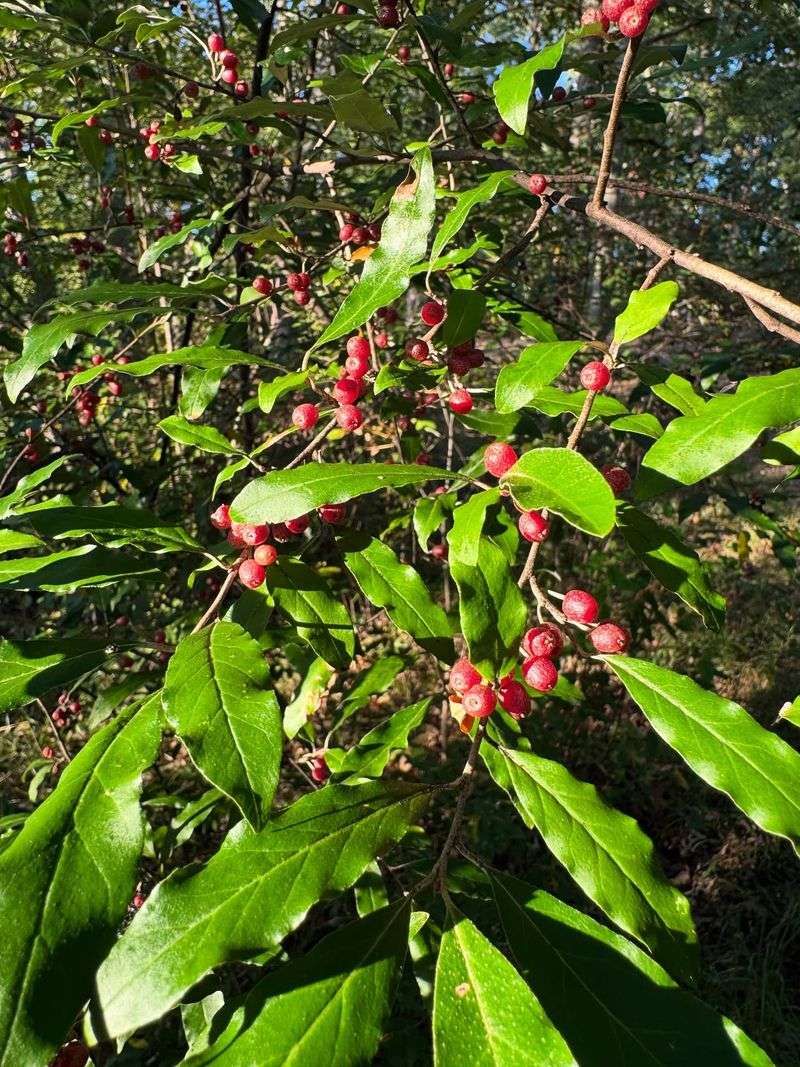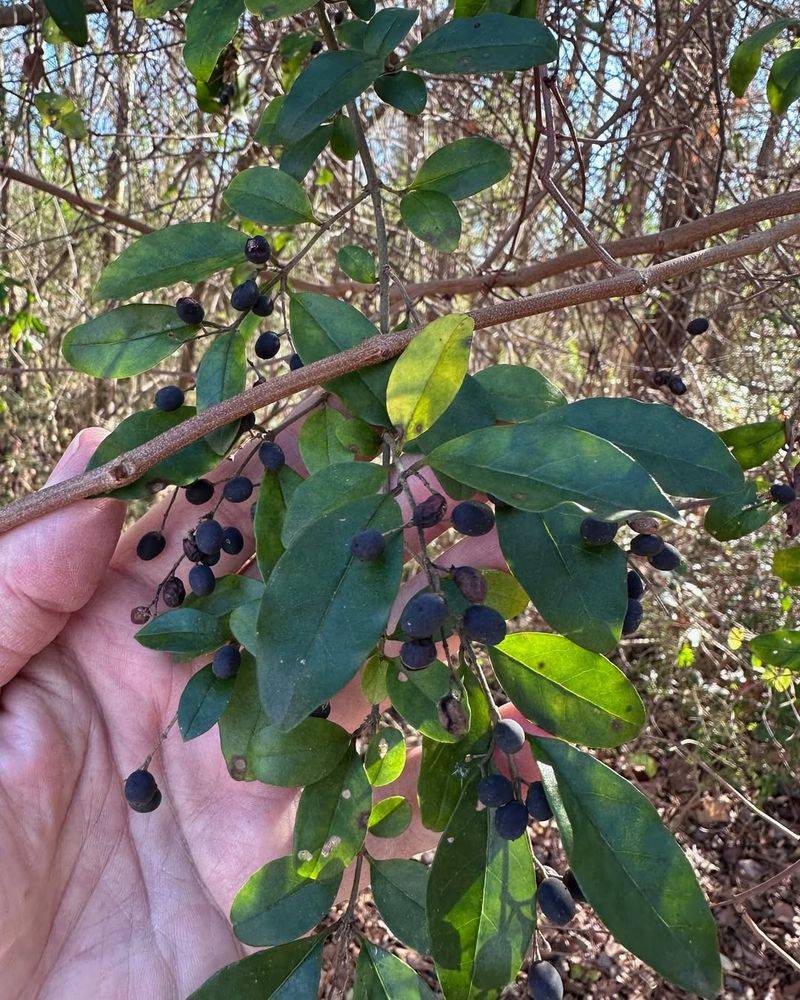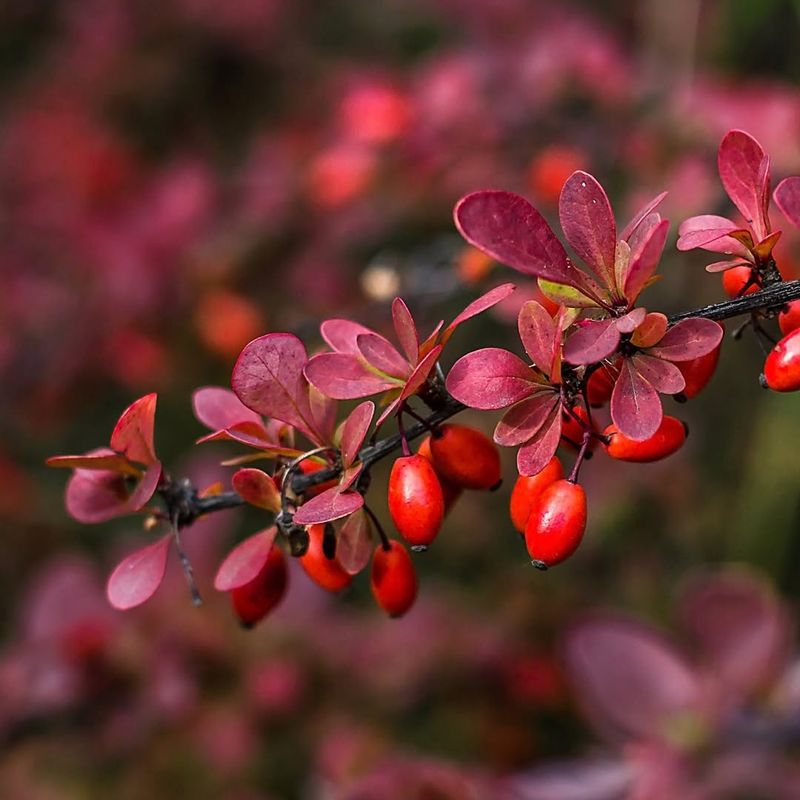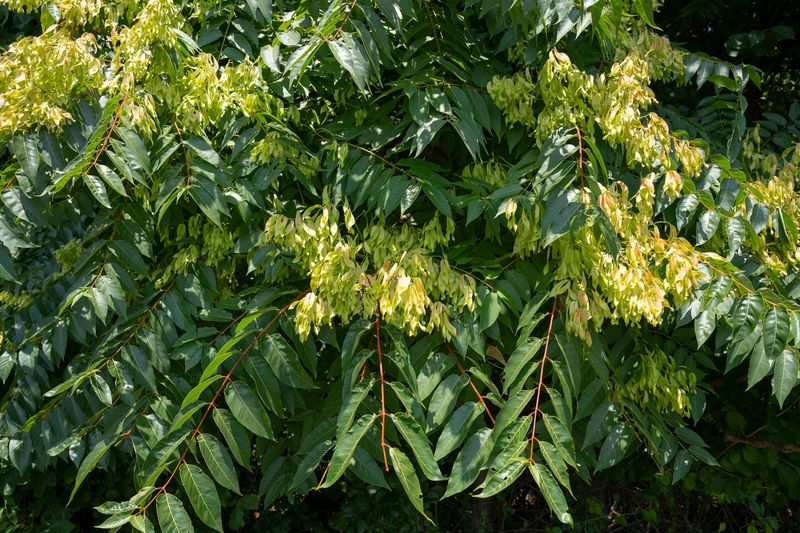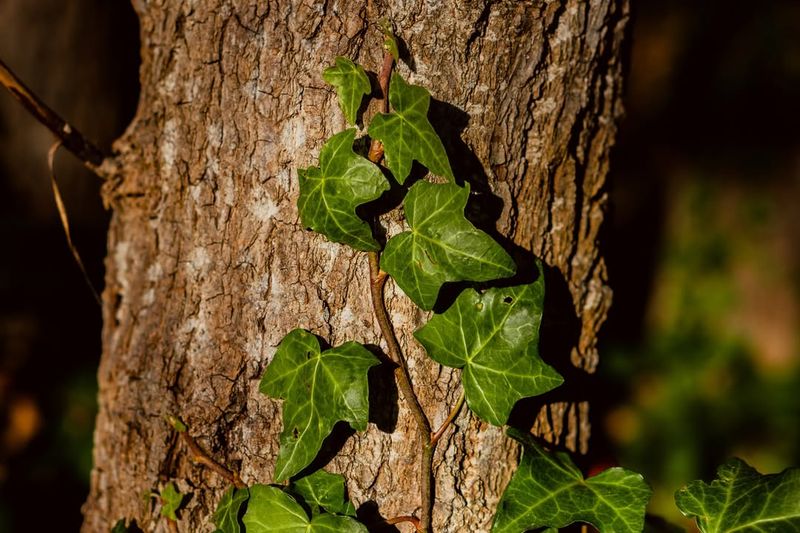Some plants spreading across Missouri suburbs are starting to raise red flags. I’ve seen a few take over entire corners of yards before anyone noticed.
These aggressive growers create more chaos than beauty once they settle in. Spotting them early keeps your garden from turning into a takeover zone.
1. Bush Honeysuckle
Spotting this shrub is easy once you know what to look for. Bush honeysuckle creates thick walls of greenery that block sunlight from reaching the forest floor in Missouri neighborhoods.
Birds spread the red berries everywhere, helping the plant invade new territories rapidly. Native wildflowers struggle to survive in the deep shade it creates.
Removing established bushes requires digging out the entire root system, which can be exhausting work for suburban homeowners trying to reclaim their yards.
2. Callery Pear
Those beautiful white blossoms that cover Bradford pear trees each spring come with a hidden cost. Callery pears were once planted throughout Missouri suburbs for their showy flowers and fast growth.
Unfortunately, they produce thorny thickets that spread aggressively into natural areas. The trees also have weak branches that break easily during storms, creating safety hazards.
Many Missouri communities now discourage planting these trees and encourage residents to choose better alternatives for their landscapes.
3. Japanese Honeysuckle
Sweet fragrance fills the air when this vine blooms, but don’t let that fool you. Japanese honeysuckle climbs over everything in its path, smothering trees, shrubs, and fences across Missouri properties.
The vine grows so vigorously that it can completely cover small trees, blocking sunlight and eventually killing them. Birds and mammals eat the black berries, spreading seeds far and wide.
Controlling this persistent plant requires cutting vines and treating stumps repeatedly throughout the growing season.
4. Wintercreeper
Evergreen leaves make wintercreeper look attractive as ground cover in Missouri gardens. However, this seemingly innocent plant transforms into a landscape nightmare over time.
It creeps along the ground forming dense mats, then climbs trees like ivy, potentially strangling them. The thick carpet prevents native plants from establishing and changes soil conditions beneath it.
Once wintercreeper escapes cultivation, it spreads into woodlands where it outcompetes native ground covers that wildlife depends on for food and shelter.
5. Autumn Olive
Silvery leaves give autumn olive a distinctive appearance in Missouri landscapes. Originally planted for wildlife food and erosion control, this shrub proved too successful at spreading.
Each plant produces thousands of red berries that birds eagerly consume and distribute across the countryside. The shrubs form dense thickets that crowd out native plants in fields and forest edges.
Nitrogen-fixing roots give autumn olive an unfair advantage over native species, allowing it to thrive in poor soils where other plants struggle.
6. Multiflora Rose
Thorns on this rose create impenetrable barriers across Missouri properties. Farmers once planted multiflora rose as living fences, but the practice backfired spectacularly.
Arching canes root wherever they touch soil, creating expanding colonies of thorny vegetation. Small white flowers produce tiny red rose hips that birds spread enthusiastically.
The dense thickets provide poor-quality wildlife habitat compared to native plants while making affected areas nearly impossible for people to access or manage effectively.
7. Chinese Privet
Glossy leaves stay green late into fall on Missouri privet shrubs. Landscapers valued Chinese privet for hedges because it tolerates heavy pruning and grows quickly.
Unfortunately, those same qualities help it invade natural areas where it forms evergreen understory thickets. White flowers produce abundant black berries that wildlife spreads readily.
The dense shade beneath privet stands prevents native plants from growing, reducing biodiversity and food sources for insects that many bird species need for raising their young.
8. Japanese Barberry
Colorful foliage makes Japanese barberry popular in Missouri landscaping designs. Varieties range from green to deep purple, adding visual interest to foundation plantings.
Research shows that barberry thickets create ideal habitat for ticks that carry Lyme disease, posing health risks. Birds spread the bright red berries into forests and parks.
Native alternatives provide similar ornamental value without the ecological downsides, making them smarter choices for homeowners concerned about environmental impact and public health.
9. Tree of Heaven
Fast growth appeals to people wanting quick shade in Missouri yards. Tree of Heaven shoots up several feet annually, but speed comes with serious problems.
Roots produce chemicals that poison nearby plants, and the tree spreads through aggressive root sprouts. Crushing leaves releases an unpleasant odor that many people find offensive.
The tree also hosts spotted lanternfly, an invasive insect pest, making its presence increasingly problematic for Missouri communities trying to prevent pest establishment.
10. Purple Loosestrife
Magenta flower spikes look spectacular in Missouri wetlands during summer. Purple loosestrife creates stunning displays that attract photographers and gardeners alike.
Each plant produces millions of tiny seeds that spread through water and mud, allowing rapid colonization. Dense stands choke out native wetland plants that provide superior food for waterfowl.
Biological control using specialized beetles shows promise, but preventing new plantings remains the most effective strategy for protecting Missouri’s valuable wetland ecosystems from further degradation.
11. English Ivy
Climbing brick walls and covering ground, English ivy creates classic garden aesthetics in Missouri. Victorian-era gardeners prized this evergreen vine for its elegant appearance and versatility.
Problems arise when ivy escapes into woodlands where it smothers native ground covers and climbs trees. The added weight on branches increases storm damage risk.
Dense ivy mats provide harborage for rodents and mosquitoes while preventing native woodland wildflowers from completing their life cycles in affected areas.



